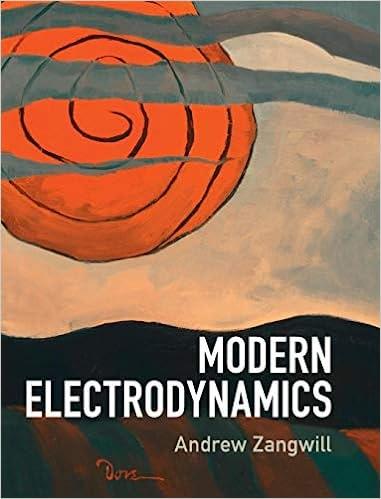Consider the time-harmonic dipole antenna with imposed current I (z) = I0 sin(kd k|z|) discussed in
Question:
Consider the time-harmonic dipole antenna with imposed current I (z) = I0 sin(kd − k|z|) discussed in Section 20.6.1 of the text.
(a) Evaluate the time-averaged angular distribution of power in the limit when the radiation wavelength is very large compared to the length of the antenna. Such an antenna is called “electrically short”.
(b) Compute the exact electric dipole moment of the antenna. Take the long-wavelength limit and use this moment to evaluate the time-averaged angular distribution of power radiated by a point electric dipole. Compare with part (a).
(c) In the literature, (dP/dΩ) is often quoted using the current at the input point, I (0) = I (z = 0), rather than the peak current I0. Show that doing this changes the explicit wavelength dependence into the dependence found for (dP/dΩ) for a time-harmonic point electric dipole modeled as two point charges ±q(t) at z = ±d connected by a spatially uniform current I (0).
Step by Step Answer:






